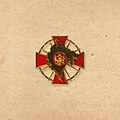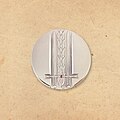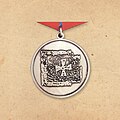National honours
Each order consists of several grades and each honour may be bestowed on nationals and foreigners alike. [1]
| Award | Order | Class | Native name |
|---|---|---|---|
 | Order of the Republic of Montenegro | Necklace | Orden Republike Crne Gore na velikoj ogrlici |
 | Sash | Orden Republike Crne Gore na lenti | |
 | Order of the Montenegrin Grand Star | Orden Crnogorske velike zvijezde | |
 | Order of Montenegrin independence | Orden Crnogorske nezavisnosti | |
 | Order of the Montenegrin Flag | 1st degree | Orden Crnogorske zastave I stepena |
| 2nd degree | Orden Crnogorske zastave II stepena | ||
| 3rd degree | Orden Crnogorske zastave III stepena | ||
 | Order for Bravery | Orden za hrabrost | |
 | Order of Work | Orden rada | |
 | Medal for Bravery | Medalja za hrabrost | |
 | Medal for Humanitarianism | Medalja za čovjekoljublja | |
 | Medal for Service | Medalja za zasluge | |